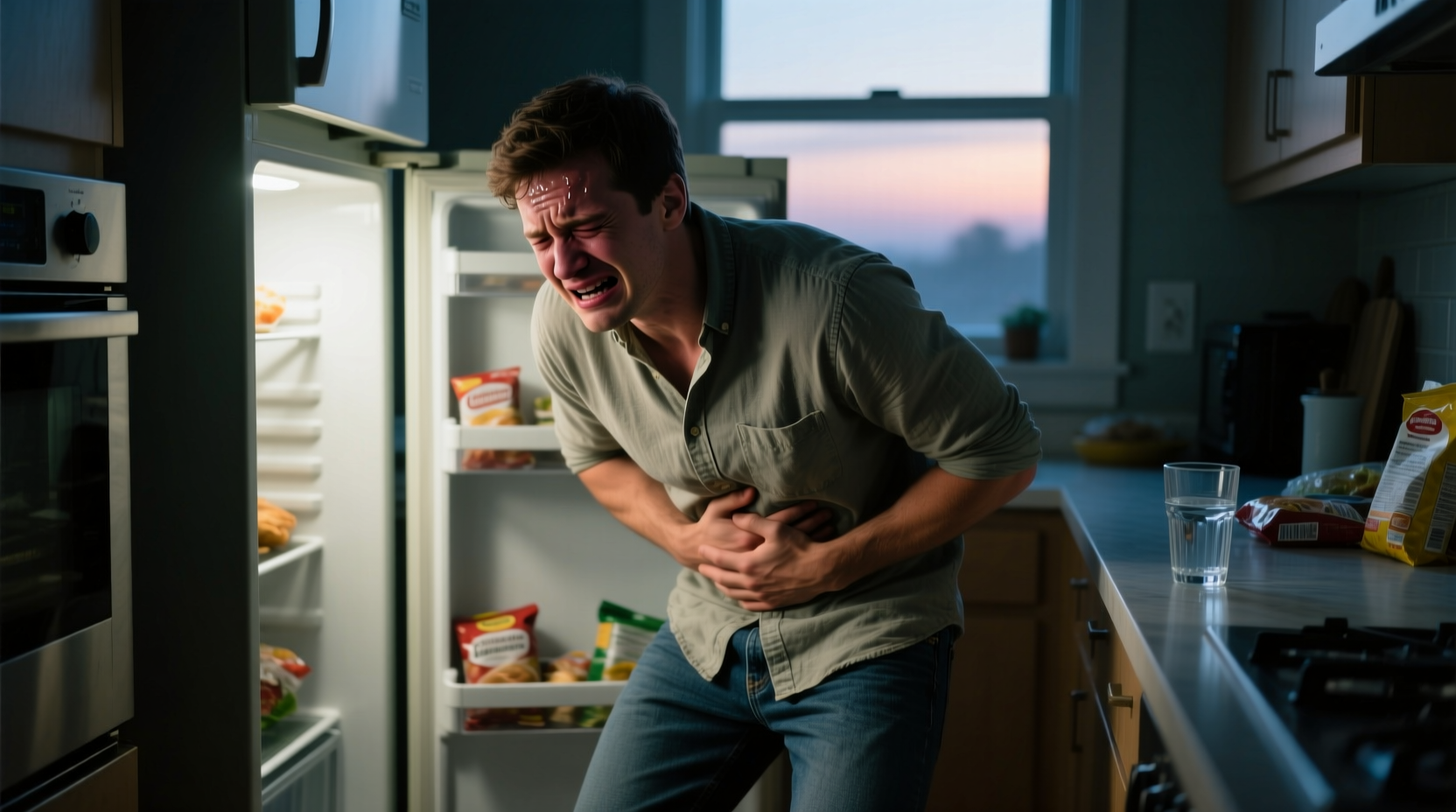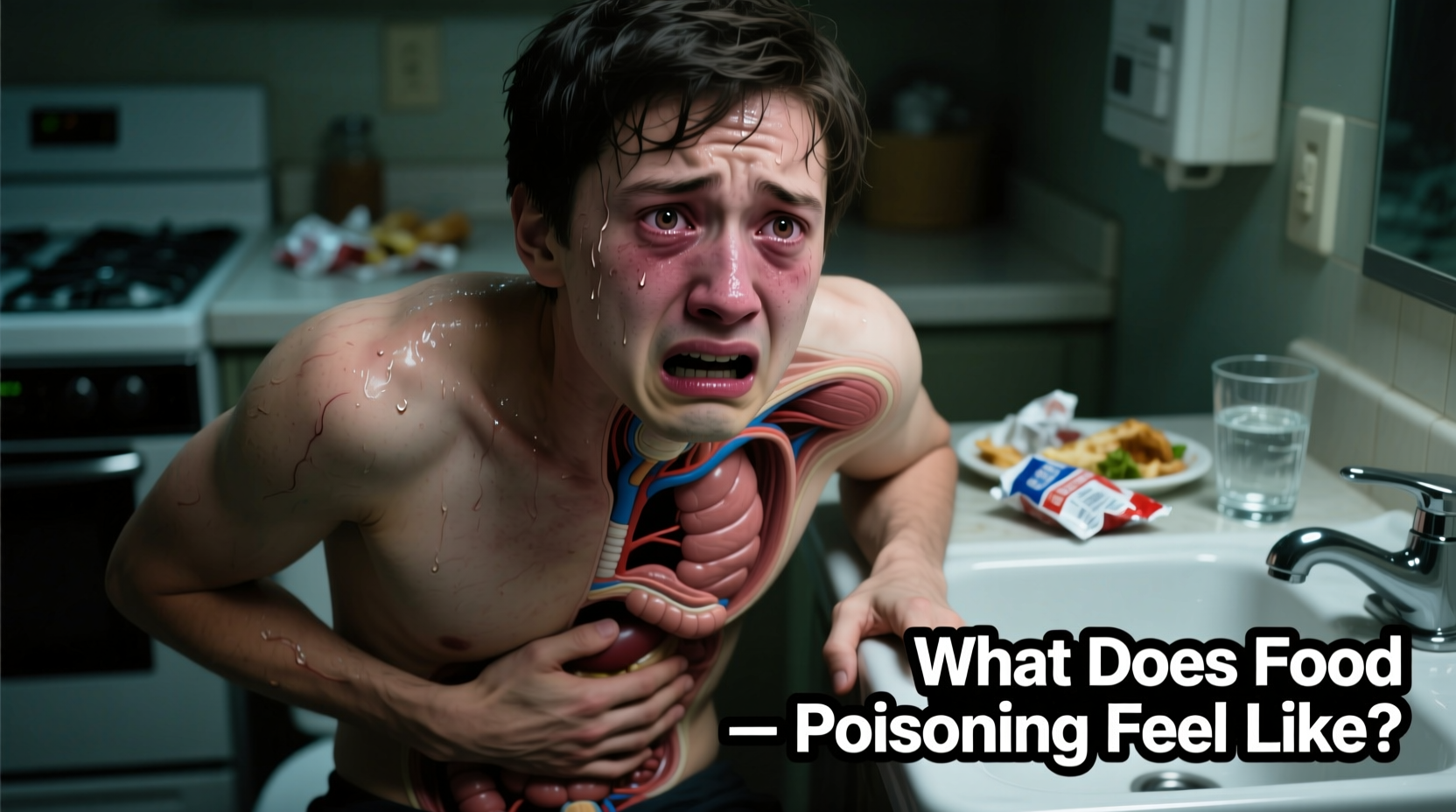If you're suddenly doubled over with stomach cramps, feeling queasy, and wondering if that questionable sushi lunch caught up with you, you're not alone. Each year in the United States, 1 in 6 Americans experiences foodborne illness, with symptoms ranging from mildly uncomfortable to dangerously severe. Understanding exactly what food poisoning feels like—and how it differs from a simple stomach bug—can help you determine when to ride it out at home versus when to seek medical attention.
The Initial Onset: Recognizing Early Warning Signs
Food poisoning symptoms typically strike with surprising speed and intensity. Within 30 minutes to 6 hours after consuming contaminated food, you'll likely experience:
- Sudden, intense stomach cramps that come in waves
- Nausea that makes even the thought of food unbearable
- Excessive sweating and clamminess
- Loss of appetite despite feeling hungry
- Early signs of dehydration like dry mouth
"Unlike regular indigestion, food poisoning hits you like a wave," explains Dr. Sarah Thompson, a gastroenterologist at Johns Hopkins Medicine. "Patients often describe it as their stomach suddenly 'turning over' with no warning."

Timeline of Symptoms: What to Expect Hour by Hour
Understanding the progression of food poisoning symptoms helps you anticipate what's coming and recognize dangerous deviations. The FDA tracks typical symptom timelines based on the contaminant:
| Time After Exposure | Common Symptoms | Typical Cause |
|---|---|---|
| 30 min - 6 hours | Nausea, vomiting, stomach cramps | Bacterial toxins (Staphylococcus) |
| 6 - 24 hours | Watery diarrhea, fever, chills | Salmonella, Campylobacter |
| 24 - 72 hours | Bloody diarrhea, severe cramps | E. coli, Shigella |
| 12 - 48 hours | Vomiting, diarrhea, headache | Norovirus |
Different Types, Different Symptoms: Not All Food Poisoning Is Equal
The specific pathogen determines your symptom profile. Recognizing these patterns helps identify potential sources:
Bacterial Food Poisoning
Salmonella (from undercooked poultry, eggs): Cramps peak within 8-72 hours, accompanied by diarrhea that may contain blood, fever up to 102°F, and headaches. Symptoms last 4-7 days.
E. coli (from undercooked ground beef, raw produce): Severe stomach cramps emerge 3-4 days after exposure, followed by watery then bloody diarrhea. The CDC reports that 5-10% of E. coli cases develop hemolytic uremic syndrome, a life-threatening kidney complication.
Viral Food Poisoning
Norovirus (from contaminated surfaces, shellfish): Hits hardest with violent vomiting and watery diarrhea within 12-48 hours. The CDC identifies norovirus as responsible for 50-70% of foodborne outbreaks, with symptoms typically resolving within 1-3 days.
Critical Warning Signs: When Food Poisoning Becomes Dangerous
While most cases resolve without medical intervention, certain symptoms require immediate attention. The NHS guidelines specify these red flags:
- Diarrhea lasting more than 2 days
- Vomiting for over 24 hours
- Signs of severe dehydration (dark urine, dizziness when standing)
- Bloody or black stools
- Fever above 102°F (38.9°C)
- Neurological symptoms like blurred vision or muscle weakness
High-risk groups—including infants, elderly adults, pregnant women, and immunocompromised individuals—should seek medical care at the first sign of symptoms. Dehydration can escalate rapidly in these populations.
Recovery Protocol: What to Do While Symptoms Last
During active symptoms, your focus should be on hydration and rest:
- Hydrate strategically: Sip small amounts of oral rehydration solutions (like WHO formula) every 5-10 minutes. Avoid sports drinks which contain too much sugar.
- Let your stomach rest: Avoid solid foods for the first 6-8 hours after vomiting stops.
- Gradually reintroduce food: Start with BRAT diet (bananas, rice, applesauce, toast) once nausea subsides.
- Monitor medication use: Avoid anti-diarrheal medications with bloody stools or high fever.
The Mayo Clinic recommends against "starvation therapy"—your body needs nutrients to recover. Begin with easily digestible foods as soon as you can keep them down.
Prevention Strategies: Reducing Future Risk
Understanding what food poisoning feels like helps you recognize it, but prevention is always better. Implement these evidence-based practices:
- Temperature control: Keep cold foods below 40°F and hot foods above 140°F
- Cross-contamination prevention: Use separate cutting boards for raw meat and produce
- Proper handwashing: Scrub for 20 seconds with soap after handling raw foods
- Safe thawing practices: Never thaw food at room temperature
- Travel precautions: Follow "boil it, cook it, peel it, or forget it" rule internationally
Remember that food poisoning symptoms can appear identical to other gastrointestinal conditions like IBS flare-ups or stomach viruses. The key differentiator is the sudden onset and association with specific food consumption.
How quickly do food poisoning symptoms appear after eating contaminated food?
Symptoms can begin as quickly as 30 minutes (with bacterial toxins) or take up to 72 hours (with certain bacterial infections). Most common pathogens like norovirus and salmonella cause symptoms within 6-24 hours after exposure.
Can food poisoning cause symptoms without diarrhea?
Yes, some forms of food poisoning primarily cause nausea and vomiting without significant diarrhea. Staphylococcus aureus and Bacillus cereus often present with violent vomiting as the main symptom, sometimes without diarrhea.
How long does food poisoning typically last?
Most cases resolve within 1-3 days. Bacterial infections like salmonella may last 4-7 days, while norovirus typically runs its course in 1-2 days. If symptoms persist beyond 72 hours or worsen, seek medical attention.
Can you have food poisoning without knowing what caused it?
Absolutely. Many people cannot identify the specific food source because symptoms may appear days after consumption, multiple foods could be contaminated, or the contaminated item was consumed in a mixture with other foods making identification difficult.











 浙公网安备
33010002000092号
浙公网安备
33010002000092号 浙B2-20120091-4
浙B2-20120091-4